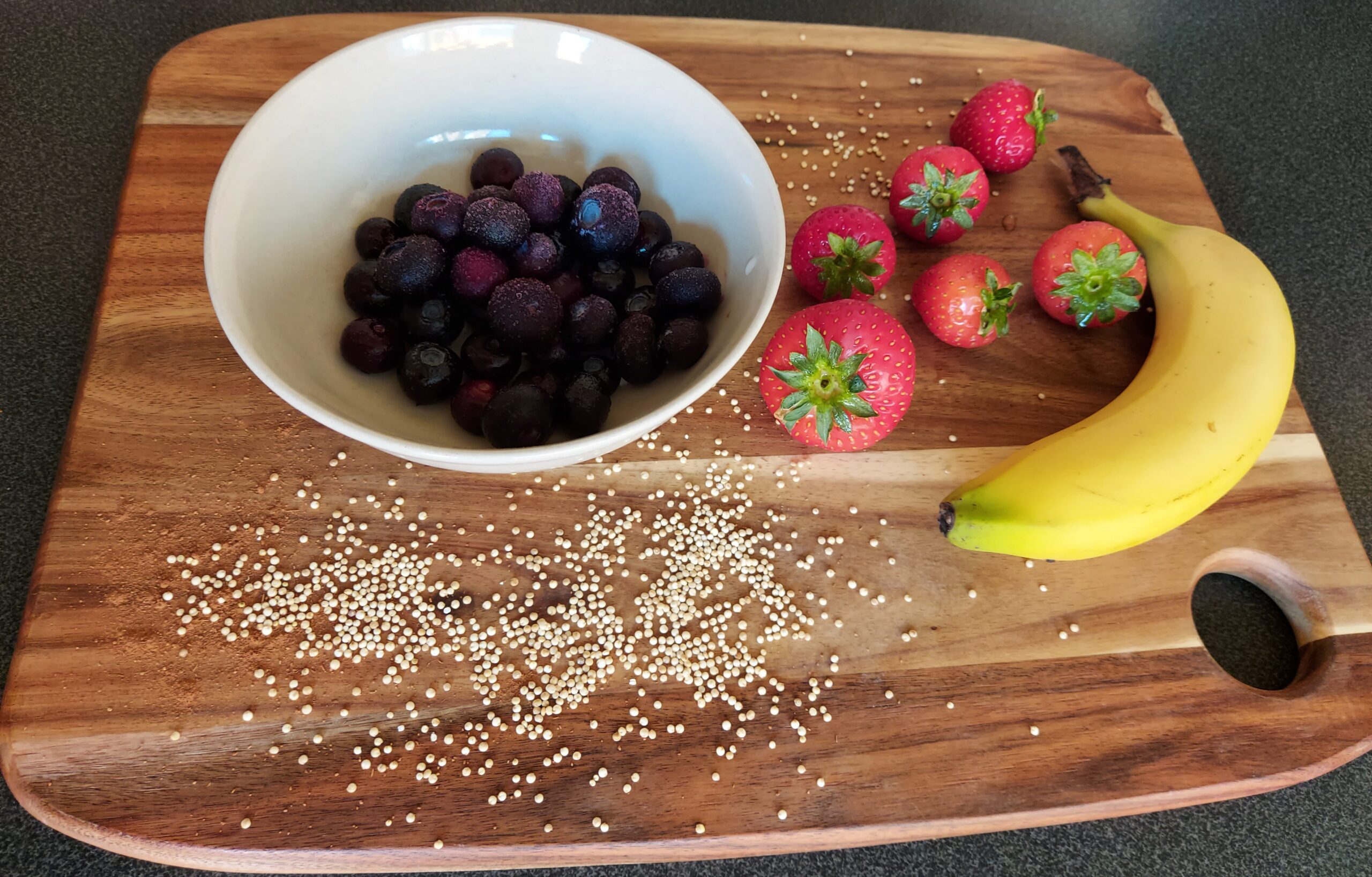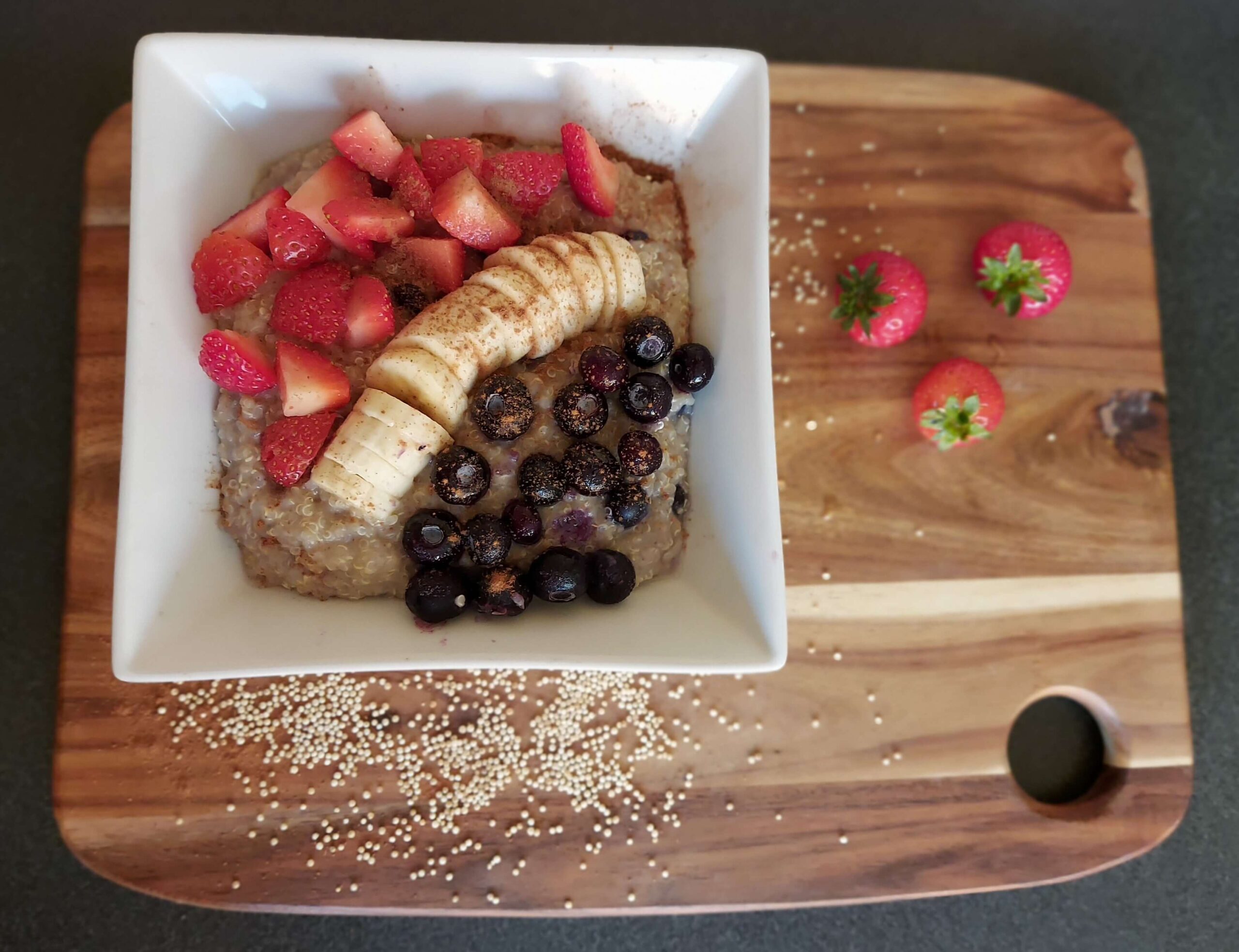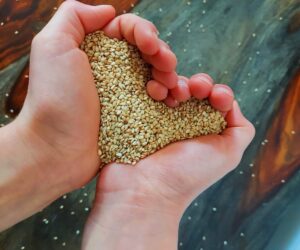In most cases, sleep issues do not emerge when we go to bed. They are the consequence of numerous decisions we make during our day-to-day lives. According to research1, food and drink choices not only impact our daily nourishment, energy and general functioning, but also play a significant role in how we sleep.
We are no stranger to the mindset of “I’m not going to eat/drink this because I won’t sleep tonight.” Of course, it’s important to know what foods or beverages prevent us from sleeping properly and avoid them in the evenings. But did you know that there are foods which specifically boost sleep quality and quantity? And they also taste good.
INTRODUCING QUINOA
So, let’s start with Quinoa. I must admit this is my favourite grain. Well… technically it’s a seed but it contains pretty similar nutritious properties to whole grains i.e. fibre. It also has an excellent balance of all nine vital amino acids, making it a perfect source of protein, especially for vegetarians. As well as containing lipids, vitamins and minerals, quinoa is also made up of numerous phytochemicals: including saponins, phytosterols, phytoecdysteroids, phenolics, betalains, and glycine betaine. These compounds may have beneficial effects on metabolic, cardiovascular and gastrointestinal health2. But how do these perks of quinoa relate to our sleep?
HOW QUINOA BENEFITS SLEEP
Magnesium
Compared to other grains like wheat, maize and rice, quinoa contains a higher concentration of magnesium. This is a vital mineral for general health3. For every 100g of dry quinoa, there is 249.6mg of magnesium, compared to 169.4mg in wheat, 137.1mg in maize, and just 73.5mg in rice. Magnesium helps us to decrease stress by calming the body and mind. It is specifically helpful to our nervous system. Further, it provides relief from muscle cramping and can also help insomnia associated with restless-leg syndrome4.
Iron
Quinoa is especially abundant in iron, with 13.2mg present in 100g of dry quinoa – compared to 3.8mg in wheat, 2.1mg in maize, and 0.7mg in rice. Iron deficiency is associated with restless leg syndrome5, headaches, poor concentration, irritability, and anxiety6. Thus, eating more iron is a good idea for both our physical and mental health.
Tryptophan
Quinoa contains tryptophan, a life-sustaining amino acid we can’t produce ourselves. So, the only way for our system to acquire it is through diet. This means tryptophan is an essential amino acid, as well as producing serotonin, a precursor to melatonin. Melatonin is a nocturnal hormone and it is involved in regulating our body’s biological clock. This displays how quinoa containing tryptophan helps benefit sleep.
B Vitamins
Quinoa is also a good source of B vitamins (especially riboflavin and folic acid7). Research demonstrates that these help obtain good sleep by regulating the body’s level of tryptophan. They are also involved in the synthesis of serotonin and dopamine an imbalance of which can lead to developing depression and anxiety disorders. And most of the time they are linked with sleep issues.
INTERESTING FACTS ABOUT QUINOA
- Throughout the history of the Inca civilization, quinoa was considered to be a sacred food.
- 2013 was the international year of quinoa, as production and consumption of quinoa have increased rapidly in the last decade8.
If you are feeling encouraged to give this delicious grain a try, you can follow one of my recipes for wholesome breakfast bursting with flavours.
YUMMY QUINOA FRUIT BREAKFAST BOWL RECIPE (2 servings)
Ingredients:
½ cup quinoa
1 ¼ cup water
Pinch of salt
1 tablespoon peanut butter/almond butter
Pinch of freshly grounded cardamom
½ cup unsweetened oat milk
1 small banana
5-6 strawberries
½ cup blueberries
Pinch of cinnamon
Preparation
- Rinse the quinoa on a fine mesh colander under running water. This step helps to eliminate the bitterness of outer coating given by saponins.
- Combine quinoa with water in a saucepan. Add salt and bring it to a boil. Reduce the heat and continue a gentle simmer for about 15-20 minutes or until water is fully absorbed.
- Meanwhile, add peanut butter and cardamom into cooking quinoa. Stir gently for peanut butter to melt evenly.
- When quinoa is cooked, remove the saucepan from the heat and let it steam for 5 minutes.
- Add milk and half a portion of blueberries.
- Serve quinoa into a bowl and garnish with strawberries cut into small pieces, remaining blueberries, and sliced banana. Sprinkle with cinnamon.
Bon Appetit!
References
- St-Onge, M.P., Mikic, A., & Pietrolungo, C.E. (2016). Effects of Diet on Sleep Quality. Advances in nutrition (Bethesda, Md.), 7(5), 938-949. https://doi.org/10.3945/an.116.012336
- Osmanlıoğlu Dağ, Ş , Gençler Özkan, A . (2019). Kinoa (Chenopodium Quinoa Willd.) Üzerine Bir Derleme. Journal of Faculty of Pharmacy of Ankara University, 43 (3), 309-333. https://doi:10.33483/jfpau.487757
- http://www.fao.org/quinoa-2013/what-is-quinoa/nutritional-value/en/?no_mobile=1
- Hornyak, M., Voderholzer, U., Hohagen, F., Berger, M., & Riemann, D. (1998). Magnesium therapy for periodic leg movements-related insomnia and restless legs syndrome: an open pilot study. Sleep, 21(5), 501–505. https://doi.org/10.1093/sleep/21.5.501
- Leung, W., Singh, I., Stockler, S., McWilliams, S., Stockler, S., & Ipsiroglu, O.S. (2020). Iron deficiency and sleep – A scoping review. Sleep Medicine Reviews, 51. https://doi.org/10.1016/j.smrv.2020.101274
- https://www.psychologytoday.com/gb/blog/evolutionary-psychiatry/201511/heavy-metal-iron-and-the-brain
- Zhang, X., Wang, Y., Zhao, R., Hu, X., Zhang, B., Lv, X., Guo, Z., Zhang, Z., Yuan, J., Chu, X., Wang, F., Li, G., Geng, X., Liu, Y., Sui, L., & Wang, F. (2019). Folic Acid Supplementation Suppresses Sleep Deprivation-Induced Telomere Dysfunction and Senescence-Associated Secretory Phenotype (SASP). Oxidative medicine and cellular longevity, 2019, 4569614. https://doi.org/10.1155/2019/4569614
- Angeli, V., Silva, P.M., Massuela, D. C., Khan, M.W., Hamar, A., Khajehei, F., Graeff-Hönninger, S., Piatti, C. (2020). Quinoa (Chenopodium quinoa Willd.): An Overview of the Potentials of the “Golden Grain” and Socio-Economic and Environmental Aspects of Its Cultivation and Marketization. Foods, 9(2), 216. doi:10.3390/foods9020216





